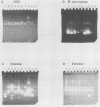Abstract
Fifteen clinical and environmental strains of Trichosporon beigelii were analyzed for similarities by using morphological features, biochemical profiles based on carbon compound assimilation and uric acid utilization, isoenzyme electrophoresis, and restriction fragment length polymorphisms of a segment of genes coding for rRNA expanded with the polymerase chain reaction. The findings suggest that strains that cause invasive disease are distinct from the superficial and the nonclinical isolates and that isolates from the skin and mucosae represent a number of different organisms, including some environmental forms. The study shows that T. beigelii is a complex of genetically distinct organisms and that more than one type is found in clinical samples.
Full text
PDF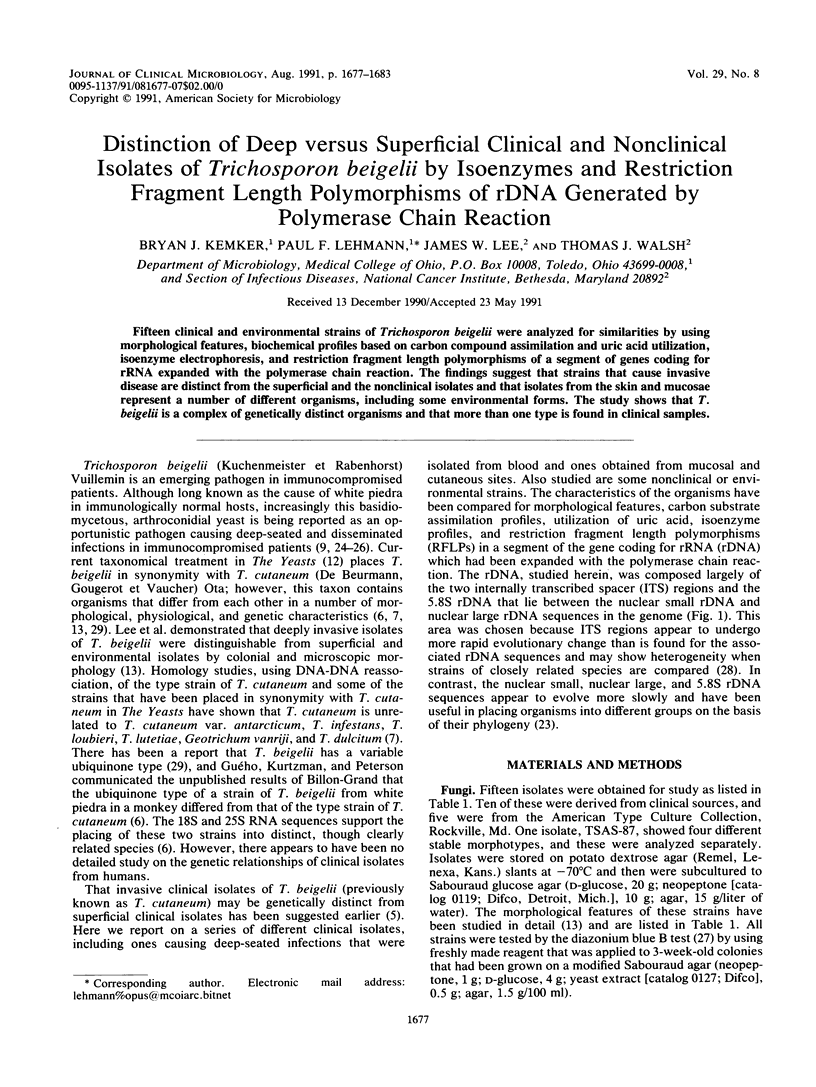
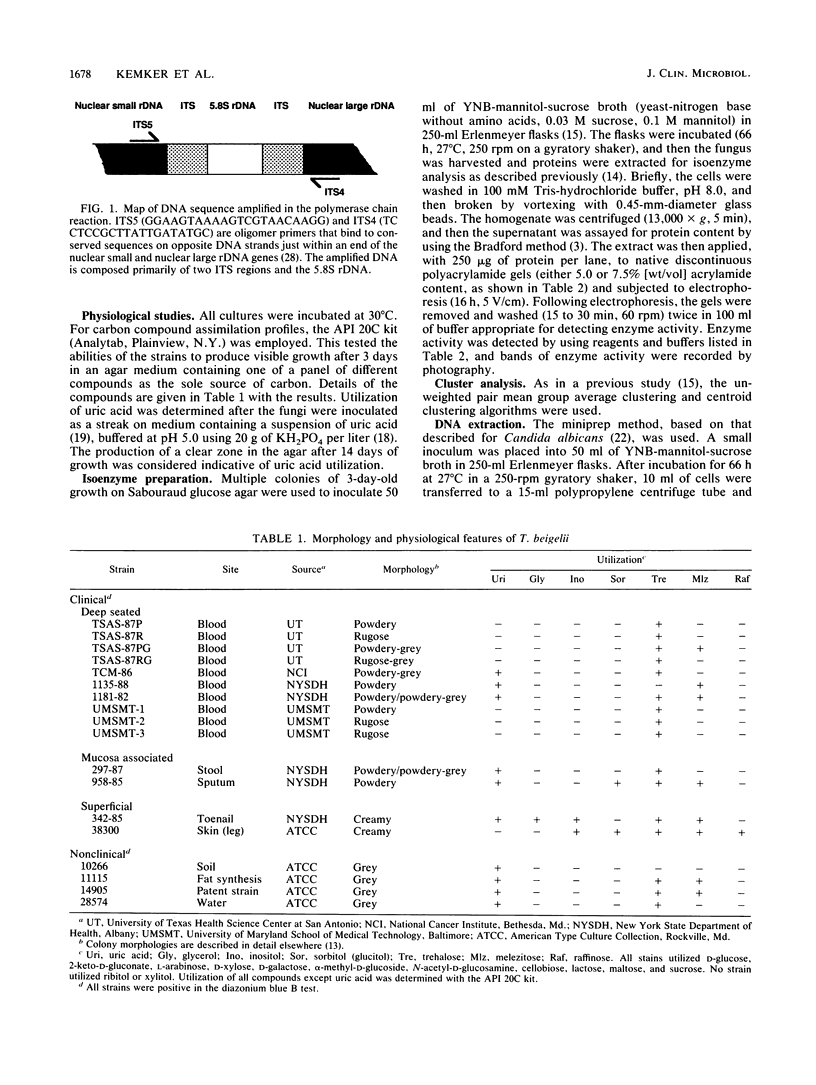
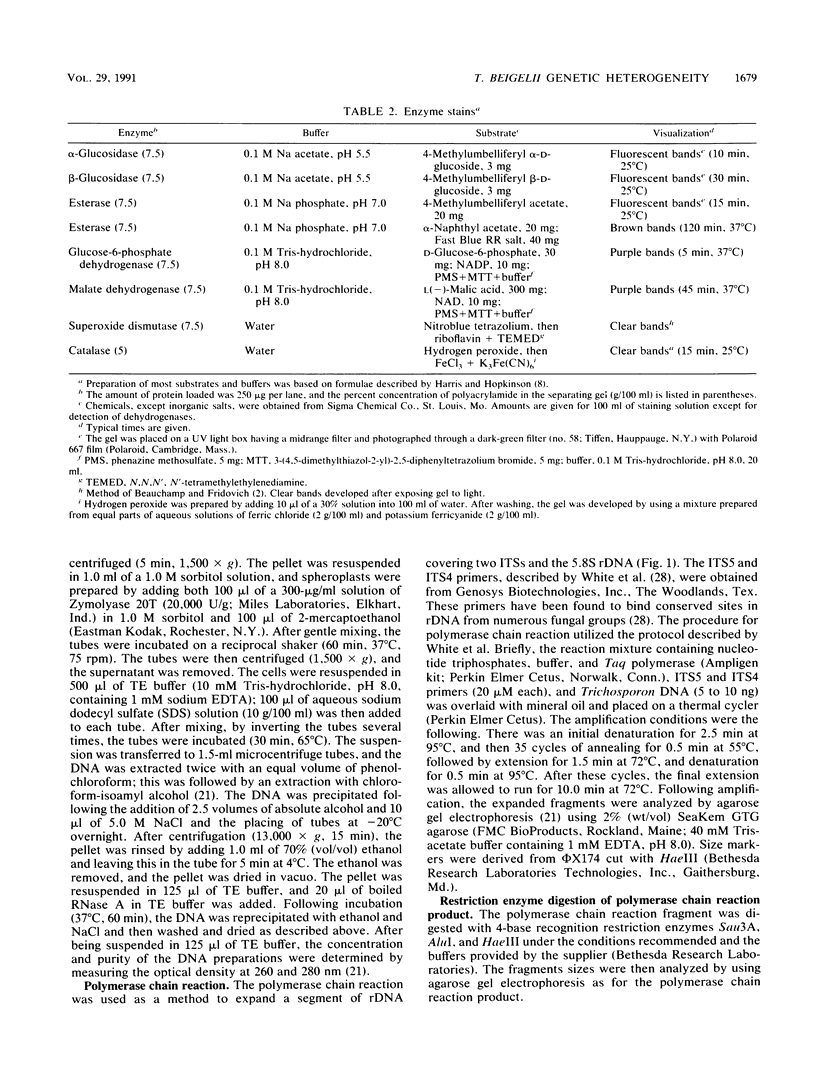
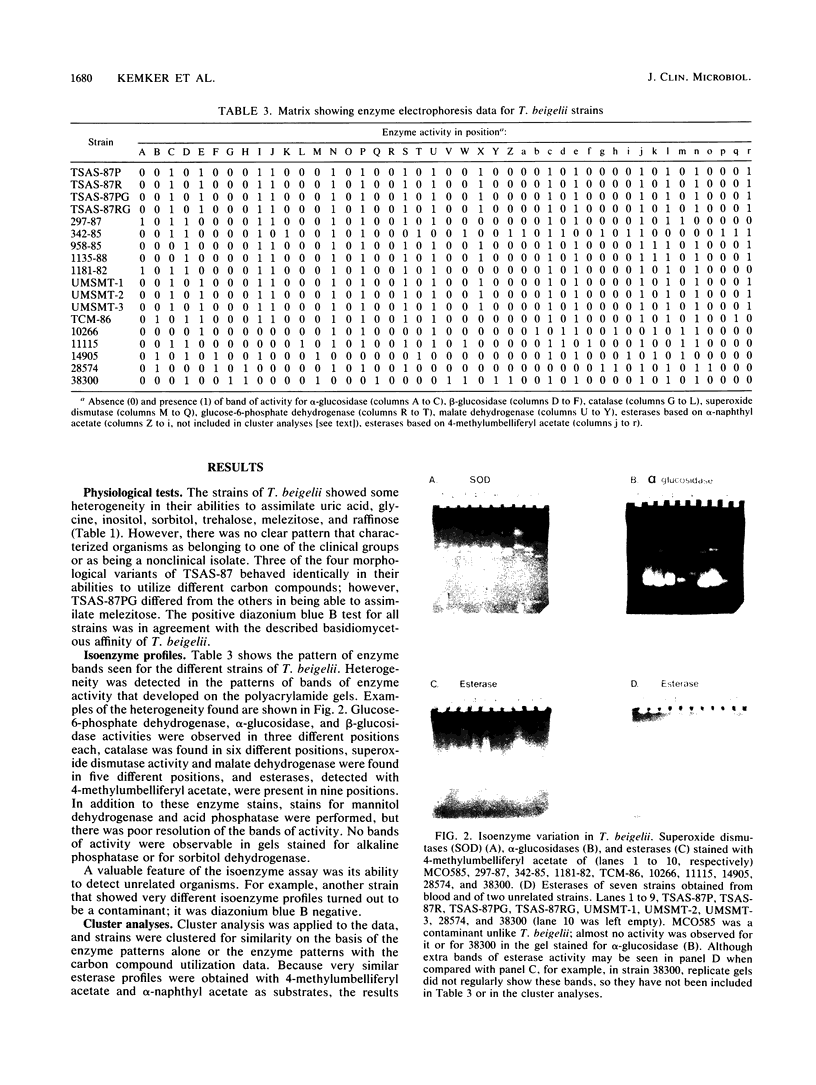
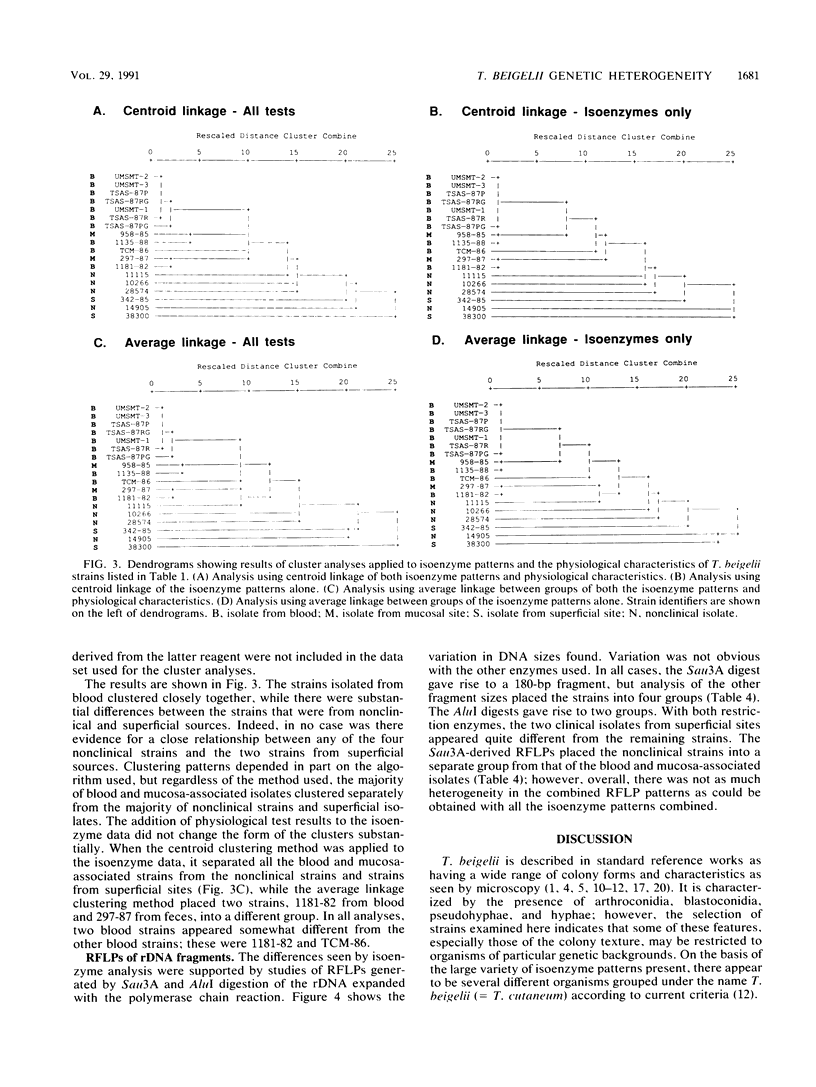
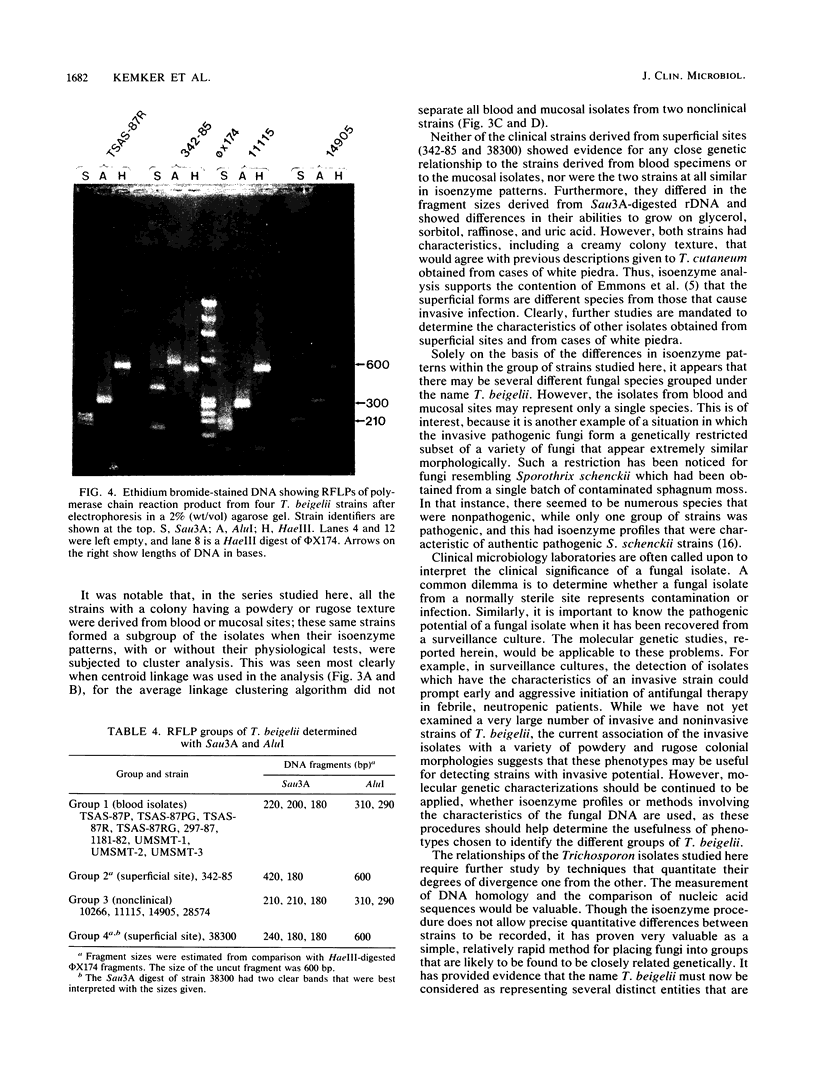
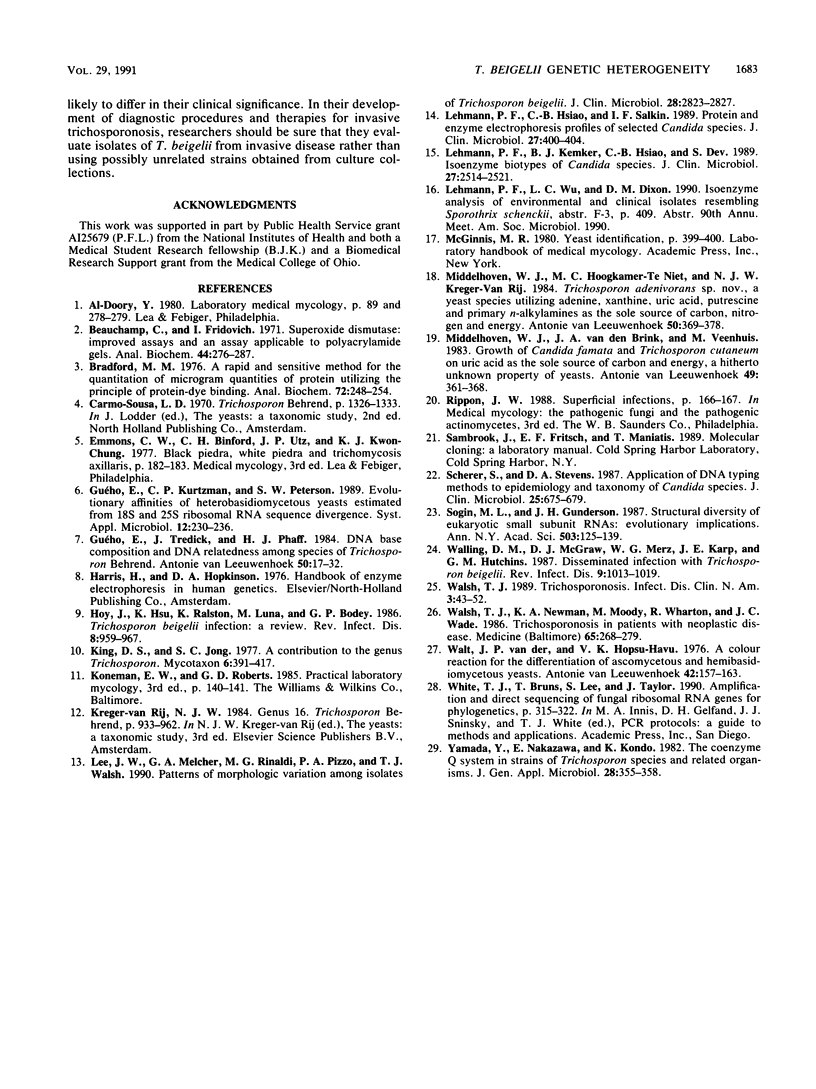
Images in this article
Selected References
These references are in PubMed. This may not be the complete list of references from this article.
- Beauchamp C., Fridovich I. Superoxide dismutase: improved assays and an assay applicable to acrylamide gels. Anal Biochem. 1971 Nov;44(1):276–287. doi: 10.1016/0003-2697(71)90370-8. [DOI] [PubMed] [Google Scholar]
- Bradford M. M. A rapid and sensitive method for the quantitation of microgram quantities of protein utilizing the principle of protein-dye binding. Anal Biochem. 1976 May 7;72:248–254. doi: 10.1006/abio.1976.9999. [DOI] [PubMed] [Google Scholar]
- Guého E., Tredick J., Phaff H. J. DNA base composition and DNA relatedness among species of Trichosporon Behrend. Antonie Van Leeuwenhoek. 1984;50(1):17–32. doi: 10.1007/BF00404904. [DOI] [PubMed] [Google Scholar]
- Hoy J., Hsu K. C., Rolston K., Hopfer R. L., Luna M., Bodey G. P. Trichosporon beigelii infection: a review. Rev Infect Dis. 1986 Nov-Dec;8(6):959–967. [PubMed] [Google Scholar]
- Lee J. W., Melcher G. A., Rinaldi M. G., Pizzo P. A., Walsh T. J. Patterns of morphologic variation among isolates of Trichosporon beigelii. J Clin Microbiol. 1990 Dec;28(12):2823–2827. doi: 10.1128/jcm.28.12.2823-2827.1990. [DOI] [PMC free article] [PubMed] [Google Scholar]
- Lehmann P. F., Hsiao C. B., Salkin I. F. Protein and enzyme electrophoresis profiles of selected Candida species. J Clin Microbiol. 1989 Mar;27(3):400–404. doi: 10.1128/jcm.27.3.400-404.1989. [DOI] [PMC free article] [PubMed] [Google Scholar]
- Lehmann P. F., Kemker B. J., Hsiao C. B., Dev S. Isoenzyme biotypes of Candida species. J Clin Microbiol. 1989 Nov;27(11):2514–2521. doi: 10.1128/jcm.27.11.2514-2521.1989. [DOI] [PMC free article] [PubMed] [Google Scholar]
- Middelhoven W. J., Hoogkamer-Te Niet M. C., Kreger-Van Rij N. J. Trichosporon adeninovorans sp. nov., a yeast species utilizing adenine, xanthine, uric acid, putrescine and primary n-alkylamines as the sole source of carbon, nitrogen and energy. Antonie Van Leeuwenhoek. 1984;50(4):369–378. doi: 10.1007/BF00394651. [DOI] [PubMed] [Google Scholar]
- Middelhoven W. J., van den Brink J. A., Veenhuis M. Growth of Candida famata and Trichosporon cutaneum on uric acid as the sole source of carbon and energy, a hitherto unknown property of yeasts. Antonie Van Leeuwenhoek. 1983 Nov;49(4-5):361–368. doi: 10.1007/BF00399316. [DOI] [PubMed] [Google Scholar]
- Scherer S., Stevens D. A. Application of DNA typing methods to epidemiology and taxonomy of Candida species. J Clin Microbiol. 1987 Apr;25(4):675–679. doi: 10.1128/jcm.25.4.675-679.1987. [DOI] [PMC free article] [PubMed] [Google Scholar]
- Sogin M. L., Gunderson J. H. Structural diversity of eukaryotic small subunit ribosomal RNAs. Evolutionary implications. Ann N Y Acad Sci. 1987;503:125–139. doi: 10.1111/j.1749-6632.1987.tb40603.x. [DOI] [PubMed] [Google Scholar]
- Van Der Walt J. P., Hopsu-Havu V. K. A colour reaction for the differentiation of ascomycetous and hemibasidiomycetous yeasts. Antonie Van Leeuwenhoek. 1976;42(1-2):157–163. doi: 10.1007/BF00399460. [DOI] [PubMed] [Google Scholar]
- Walling D. M., McGraw D. J., Merz W. G., Karp J. E., Hutchins G. M. Disseminated infection with Trichosporon beigelii. Rev Infect Dis. 1987 Sep-Oct;9(5):1013–1019. doi: 10.1093/clinids/9.5.1013. [DOI] [PubMed] [Google Scholar]
- Walsh T. J., Newman K. R., Moody M., Wharton R. C., Wade J. C. Trichosporonosis in patients with neoplastic disease. Medicine (Baltimore) 1986 Jul;65(4):268–279. doi: 10.1097/00005792-198607000-00005. [DOI] [PubMed] [Google Scholar]



